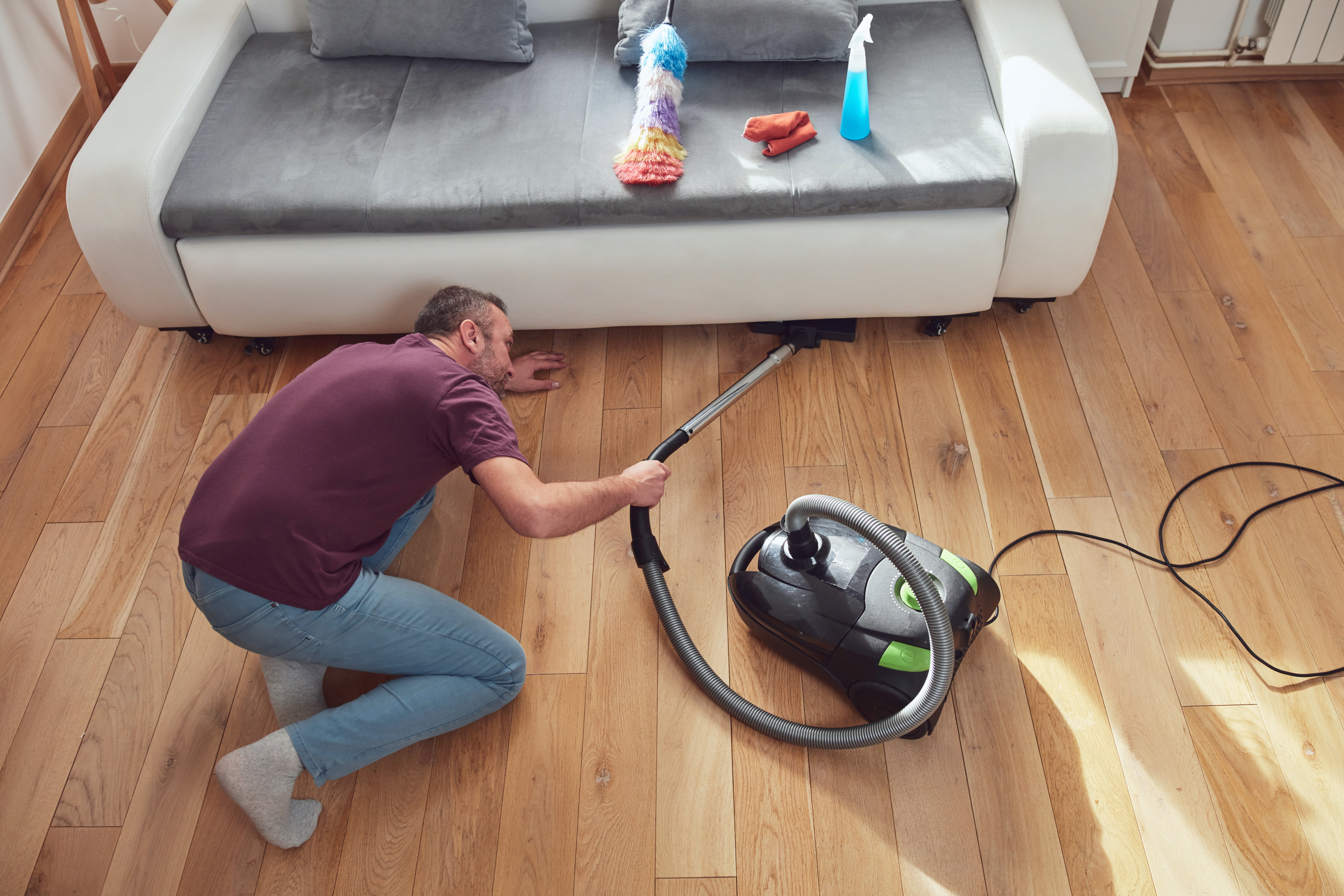
If you need to get rid of bugs and pests making your home unsafe, it's time to decide if fumigation is necessary. Learn more about average fumigation costs.
These pests can wreak havoc with your wool sweaters and even get into your food


Picture this—you're in your home, minding your own business, when you notice tiny bald patches on your carpeting. You may assume it's just the carpet wearing down, but a close inspection may reveal a beetle infestation—and not the fun, British invasion kind. Here's some helpful information on how to spot carpet beetle damage, along with what these pests look like, how they behave, and how to keep them out of your house.
Carpet beetles are small bugs that look like small, hairy worms (larvae) or small beetles. They usually enter homes by hitching a ride on items like flowers or furniture; sometimes, they simply fly in through the windows. They're attracted to light, so like moths, they flock to homes when it's dark outside and the lights are on indoors, leading to an unwelcome pest infestation.
There are four different types of carpet beetles:
The black carpet beetle
The varied carpet beetle
The common carpet beetle
The furniture beetle
Baby carpet beetles, or larvae, usually look like small, fuzzy worms, while adult beetles are round and shiny, growing to about an eighth of an inch. Black carpet beetles, like their name, are all black and oval, while the other types—common, varied, and furniture—have a speckled or tortoiseshell appearance and are more round.
Although adult carpet beetles prefer to live outdoors because they eat pollen and nectar, baby carpet beetles like the indoors because they eat carpet fibers, fabric, pet hair, and other indoor material. Adult carpet beetles generally hitch a ride into your house when you bring items inside, or they fly through an open window. They can lay up to 50 eggs that will hatch between six to 16 days. The beetle larvae then feed on your fabrics until they are old enough to make their way back outside.

One of the problems with carpet beetles is that they can go undetected for long periods. Aside from just seeing one in your home, some signs of a carpet beetle infestation include:
Bald spots on rugs
Bare spots on wool
Larvae skins left behind
If you see any of these telltale signs, it's best to get a local pest control professional ASAP to deal with the problem.
Though they are sometimes confused with bed bugs, carpet beetles and bed bugs are different. While carpet beetles can get into your bed and eat the fabric of your sheets, mattress, or other linens, unlike bed bugs, they don't bite humans and animals. Bed bugs need blood to grow, while carpet beetles sustain themselves on fabric, leather, lint, and other organic materials.
While carpet beetles can destroy your belongings, they are not harmful to humans because they don't bite. However, some people are allergic to them and may break out in a rash of tiny red bumps when exposed to carpet beetles. The allergic reaction usually occurs when someone is exposed to the babies with the furry outer shell. Be wary of scratching a carpet beetle rash, as it can cause an infection.
You can do a few things to avoid a carpet beetle infestation in your home.
Keep your windows closed and make sure your screens aren't damaged.
Cover your vents.
Check out your foundation (or have a professional check it) and fill in any cracks where pests could get through.
Sign up with a regular pest control service near you and get your property sprayed regularly.
Keep your rugs vacuumed and your furniture dusted.
Inspect any plants or flowers for bugs before bringing them into your home.
Store all your food in tightly sealed containers.
Dry your clothing on the highest heat setting to kill any eggs or larvae.
If you suspect that you have a carpet beetle infestation, vacuum and dust your home thoroughly. After you've cleaned, if you still think you have a problem, the best way to get rid of them is to call a pest control service. Treatment usually starts at around $250, and they use techniques like heat remediation, setting carpet beetle pheromone traps, and applying chemical treatment sprays to eradicate the infestation.
From average costs to expert advice, get all the answers you need to get your job done.

If you need to get rid of bugs and pests making your home unsafe, it's time to decide if fumigation is necessary. Learn more about average fumigation costs.

Find out how much it costs to remove armadillos and stop them from coming back. Know how much to budget to humanely remove these pesky critters from your yard.

Sometimes birds nest in unwelcome places. Find out how much bird nest removal will cost based on factors like location, bird species, and preventative measures.

Termites can cause major structural damage to your home if left untreated. Use this guide to learn how to get rid of termites once and for all.

Pest inspection costs depend on the type of inspection, location, and other factors. Learn more about how much pest inspections cost with this guide.

There are many types of mites that may infest your home. Learn how to get rid of mites and tips for preventing them from returning.